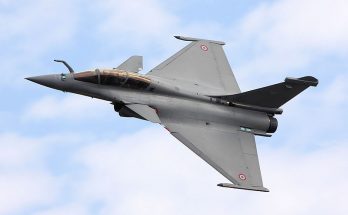A snapshot of recent news from sources around the world on the ongoing Russia-Ukraine war.
 Source: Ukraine Ministry of Defense
Source: Ukraine Ministry of DefensePolitical Developments
The Trump administration has proposed a 28-point peace plan to end the Russia-Ukraine war, calling for an immediate ceasefire and major territorial concessions by Ukraine, including recognizing Crimea, Donetsk, and Luhansk as Russian and freezing lines in other regions. Ukraine would be barred from joining NATO, required to cap its military at 600,000 troops, and hold elections within 100 days, though EU membership would remain open. In exchange, the U.S. would offer security guarantees if Russia reinvades, coordinate a reconstruction plan funded partly by $100 billion in frozen Russian assets, and negotiate phased sanctions relief for Moscow. The plan also includes a neutral buffer zone, a Russia-NATO security dialogue, a non-aggression pact, return of all civilian detainees, and oversight by a Trump-chaired Peace Council.
Kyiv is reportedly under intense pressure to accept the deal on an accelerated timeline, with a goal of finalizing a peace agreement between all sides before the end of the year.
The sudden announcement of the plan comes as the Ukrainian government faces a domestic backlash in wake of a corruption investigation that prompted Ukrainian President Volodymyr Zelensky to dismiss two officials. Zelensky has been under pressure to do more, with members of the Verkhovna Rada calling on the president to fire his powerful Chief of Staff, Andriy Yermak.
Polish Prime Minister Donald Tusk has said that an explosion damaging a railway line used to transport aid to Ukraine was an “unprecedented act of sabotage” involving an explosive device. While no casualties were reported from the blast in the village of Mika, Tusk stated the attack was directly aimed at the Polish state and its critical logistics infrastructure.
President Zelensky and Greek Prime Minister Kyriakos Mitsotakis have signed a US liquid natural gas supply deal in Athens to transport American energy resources to Kyiv. The agreement utilizes Greek infrastructure to facilitate the import of liquefied natural gas, aiming to bolster Ukraine’s energy security and diversify its supply routes.
A drone struck the Turkish-flagged tanker MT Orinda in the port of Izmail, setting the vessel on fire during an offloading operation just one day after Ukraine signed a deal to import U.S. natural gas through the region. While the 16-member crew evacuated safely, the attack underscores the threat to the new energy corridor as Russia intensifies its campaign with Iskander-M ballistic missiles and large-scale drone barrages.
Ukraine Military Assistance and Acquisition
Ukraine signed a letter of intent with France to procure 100 Rafale fighters over the next 10 years, as well as air defense systems, munitions, and drones. The agreement doesn’t reflect a contract for new equipment, but it represents Ukraine’s planned investment over the coming years.
The Rafale LOI follows a similar agreement announced last month with Saab for the JAS-39 Gripen. Both deals would prove incredibly expensive, and are likely only realistic if European governments approve the use of frozen Russian assets to help pay for them.
The U.S. State Department has approved a potential $105 million foreign military sale to upgrade Ukraine’s Patriot air defense launchers. The agreement, which names RTX Corp. and Lockheed Martin as the primary contractors, authorizes the modernization of Ukraine’s current M901 launchers to the M903 configuration. This upgrade will enable the batteries to fire the full spectrum of Patriot interceptors, including the advanced PAC-3 Missile Segment Enhancement (MSE).
Alongside their liquid natural gas deal, Ukraine and Greece jointly agreed to produce unmanned surface vessels for procurement by both of their militaries. The USVs will be manufactured at Greek shipyards.
Kyiv plans to acquire more advanced air-to-air missiles as part of future fighter purchases. Of course, financing is an issue. Ukraine may have received MICA missiles along with the Magic 2s. The MICA may be available in limited numbers. The Magic 2 is seen as a stopgap.
Battlefield Updates
Ukraine has used its small fleet of F-16 and Mirage 2000 fighter aircraft to defend against a Russian missile attack. The Ukrainian aircraft shot down at least 10 Russian cruise missiles. This attack took place on November 19 and included 48 missiles targeting energy and civilian infrastructure. The F-16 entered service with the Ukrainian Air Force in August 2024. Kyiv officials claim these aircraft have intercepted and destroyed over 1,300 Russian aerial targets. In addition, the F-16 has struck over 300 ground targets.
The Ukrainian military reportedly utilized the Army Tactical Missile System to hit a target inside Russia, the first time during the Trump administration the U.S.-supplied ballistic missiles had been used to hit inside Russia. The strike is believed to have taken place in Russia’s Voronezh.
Russia is outfitting its Orion medium-altitude, long-endurance (MALE) unmanned air vehicles (UAV)s with Kh-BPLA laser-guided missiles. The Kh-BPLA missile was developed by the Instrument Design Bureau (KBP). The Orion UAV was developed by the Kronstadt Group. Kh-BPLA combines components from the Kornet anti-tank missile and the Krasnopol laser-guided artillery shell. The Kh-BPLA features semi-active laser guidance system and a range of 2 to 8 kilometers. Russia has used Orion MALE UAV in operations over Ukraine.
For 50 years, Forecast International intelligence reports have been the aerospace and defense industry standard for accurate research, analysis, and projections. Our experienced analysts compile, evaluate, and present accurate data for decision makers. FI's market research reports offer concise analysis of individual programs and identify market opportunities. Each report includes a program overview, detailed statistics, recent developments and a competitive analysis, culminating in production forecasts spanning 10 or 15 years. Let our market intelligence reports be a key part of reducing uncertainties and mastering your specific market and its growth potential. Find out more at www.forecastinternational.com
image sources
- Ukraine_UGV: Ukraine Ministry of Defense



